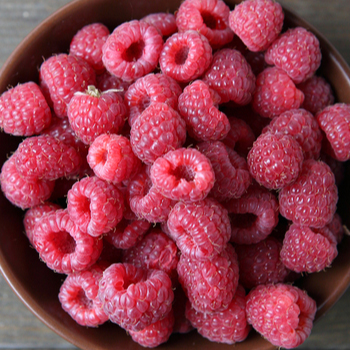
Learning Download: How to Grow Raspberries
From Seed to Harvest: A guide to growing raspberries.
Raspberries grow best in cooler climates, but some newer varieties allow the berries to grow in warmer climates, too. Two main types of raspberries exist, including the summer-fruiting raspberries which produce one crop per season and ever-bearing raspberries, which produce a fall crop and also can produce a crop the next summer. A majority of raspberry plants are summer-fruiting, and they also are self-fertile.
To plant:
Soak raspberry roots for an hour before planting outside. Prior to planting, amend the soil with some compost. Make sure you plant the raspberries far away from wild-growing berries, since the wild-growing berries can cause an increase in disease. When planting, keep the crown of the plant an inch or two above the ground. For red and gold raspberry plants, space the 2 to 3 feet apart in rows set 8 feet apart. For black or purple raspberries, space them 4 feet apart.
To grow:
Raspberries can require support for certain varieties, so plant them along a fence, row or a trellis. Add mulch around the plants to preserve moisture and deter weeds. Water the raspberry plants 1 inch per week. Pruning varies depending on the type of raspberry you plant. For red raspberries, prune them after the last harvest and before new growth begins. Cut the canes that produced fruit to the ground. For black and purple berry plants, pinch off the tips of the shoots when they are at 30 weeks of growth, because this will encourage branching. Similar to red raspberries, cut the canes that bore fruit to the ground after harvest and before spring growth, cut back side branches to 12 or 18 inches. Keep six canes per hill.
To harvest:
Raspberries will not produce fruit until their second season of growth. To harvest, pick the berries on a sunny day when the fruit is dry. Don’t wash them after picking because the berries will become mushy. When a raspberry is ripe, it will easily leave the vine so don’t pull too hard or it might become crushed.
What raspberries crave:
Fertilize raspberry plants in the winter. Use organic fertilizers in the early winter and inorganic fertilizers in late winter or early spring. When using an inorganic fertilizer, opt for a 10-10-10 or a 20-20-20. If you don’t want to fertilize in the winter, fertilize seasonally by a fourth of the amount you would use to mass fertilize in the winter.
Where to buy raspberry plants:
You can find raspberry plants at Urban Farmer.

